Esvin Alarcón Lam
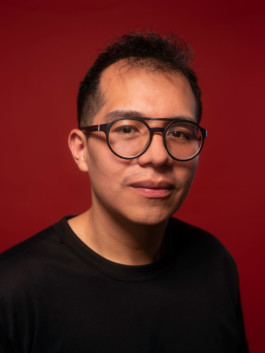
© Púrpura
Esvin Alarcón Lam lives and works in Guatemala City, Guatemala.
Esvin Alarcón Lam (he/they) is a Guatemala-born visual artist working across painting, sculpture, performance, textiles, photography, sound, and video. His practice explores materiality and abstraction as pathways to reimagine the past, with a focus on queer identity, diasporic memory, and community. He draws on his Chinese heritage and family history to question national symbols and create vibrant emblems of alternative belonging. Through playful, politically charged works, he affirms queer presence and invites new ways of feeling, remembering, and imagining futures.
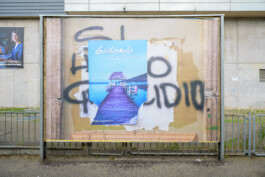
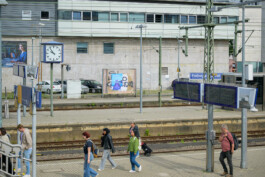
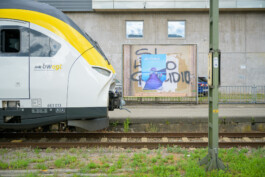
Esvin Alarcón Lam, Postales para desaparecer, 2019, Installation view, Freiburg Hauptbahnhof Platform 8, Photo: Marc Doradlzillo, © Biennale für Freiburg 3
Esvin Alarcón Lam, Postales para desaparecer, 2019, Installation view, Freiburg Hauptbahnhof Platform 8, Photo: Marc Doradlzillo, © Biennale für Freiburg 3
Esvin Alarcón Lam, Postales para desaparecer, 2019, Installation view, Freiburg Hauptbahnhof Platform 8, Photo: Marc Doradlzillo, © Biennale für Freiburg 3
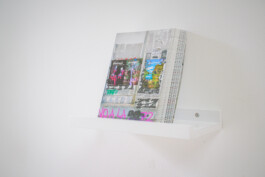
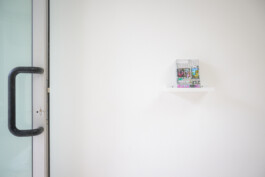
Esvin Alarcón Lam, Postales para desaparecer, 2019, Installation view, Schopf2, Photo: Marc Doradzillo © Biennale für Freiburg 3
Esvin Alarcón Lam, Postales para desaparecer, 2019, Installation view, Schopf2, Photo: Marc Doradzillo © Biennale für Freiburg 3
Postales para desaparecer
2019 Photo series: poster printing
356 × 252 cm
This public installation extends the themes introduced in Postales para desaparecer (Postcards for Disappearing). While the original photographic series reflected on acts of erasure within urban space, this intervention brings the work directly into the public realm.
The image presents the word “genocidio” (genocide) partially obscured by a state-issued tourism poster. At first glance, it is unclear whether the painted word belongs to the billboard itself or to the wall beneath it—echoing the ambiguity and layered visual language explored in the original series. Viewers may initially experience a moment of disorientation, as the geographic context of the message is not immediately apparent. Only upon closer inspection does it become clear that the tourism poster is from Guatemala, anchoring the image in a specific political and historical reality.
By relocating the work from a gallery context to the street, we underscore the power dynamics involved in visibility, memory, and denial. The billboard, traditionally a tool for advertising and state messaging, becomes a contested site—where historical violence and institutional forgetting confront each other in plain sight.
The photo series Postales para desaparecer will be presented both as part of the described intervention at Freiburg Central Station and in postcard format in the Schopf2 exhibition space.
Titel
Location
Information
VeranstaltungEN mit XXX
Event
Location
Date
In Cooperation with

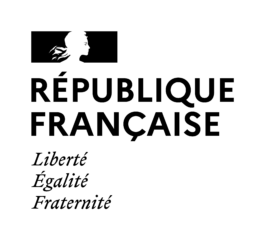

Esvin Alarcón Lam

© Púrpura
Esvin Alarcón Lam lives and works in Guatemala City, Guatemala.
Esvin Alarcón Lam (he/they) is a Guatemala-born visual artist working across painting, sculpture, performance, textiles, photography, sound, and video. His practice explores materiality and abstraction as pathways to reimagine the past, with a focus on queer identity, diasporic memory, and community. He draws on his Chinese heritage and family history to question national symbols and create vibrant emblems of alternative belonging. Through playful, politically charged works, he affirms queer presence and invites new ways of feeling, remembering, and imagining futures.



Esvin Alarcón Lam, Postales para desaparecer, 2019, Installation view, Freiburg Hauptbahnhof Platform 8, Photo: Marc Doradlzillo, © Biennale für Freiburg 3
Esvin Alarcón Lam, Postales para desaparecer, 2019, Installation view, Freiburg Hauptbahnhof Platform 8, Photo: Marc Doradlzillo, © Biennale für Freiburg 3
Esvin Alarcón Lam, Postales para desaparecer, 2019, Installation view, Freiburg Hauptbahnhof Platform 8, Photo: Marc Doradlzillo, © Biennale für Freiburg 3


Esvin Alarcón Lam, Postales para desaparecer, 2019, Installation view, Schopf2, Photo: Marc Doradzillo © Biennale für Freiburg 3
Esvin Alarcón Lam, Postales para desaparecer, 2019, Installation view, Schopf2, Photo: Marc Doradzillo © Biennale für Freiburg 3
Postales para desaparecer
2019 Photo series: poster printing
356 × 252 cm
This public installation extends the themes introduced in Postales para desaparecer (Postcards for Disappearing). While the original photographic series reflected on acts of erasure within urban space, this intervention brings the work directly into the public realm.
The image presents the word “genocidio” (genocide) partially obscured by a state-issued tourism poster. At first glance, it is unclear whether the painted word belongs to the billboard itself or to the wall beneath it—echoing the ambiguity and layered visual language explored in the original series. Viewers may initially experience a moment of disorientation, as the geographic context of the message is not immediately apparent. Only upon closer inspection does it become clear that the tourism poster is from Guatemala, anchoring the image in a specific political and historical reality.
By relocating the work from a gallery context to the street, we underscore the power dynamics involved in visibility, memory, and denial. The billboard, traditionally a tool for advertising and state messaging, becomes a contested site—where historical violence and institutional forgetting confront each other in plain sight.
The photo series Postales para desaparecer will be presented both as part of the described intervention at Freiburg Central Station and in postcard format in the Schopf2 exhibition space.
Titel
Location
Information
VeranstaltungEN mit XXX
Event
Location
Date
In Cooperation with


